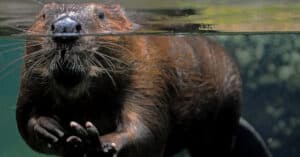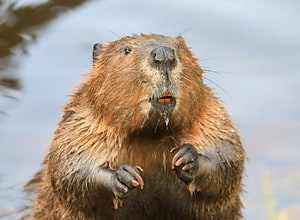Imagine that you see a furry creature swimming in water with a large, flat tail and webbed feet. Two creatures that might spring to mind in such a case are the platypus and the beaver. Both of these animals are semi-aquatic mammals, and they can be hard to tell apart if they are close to each other. However, we’re going to cover the differences between a platypus vs beaver. Learn how to confidently distinguish these creatures from one another.
Comparing a Platypus and a Beaver
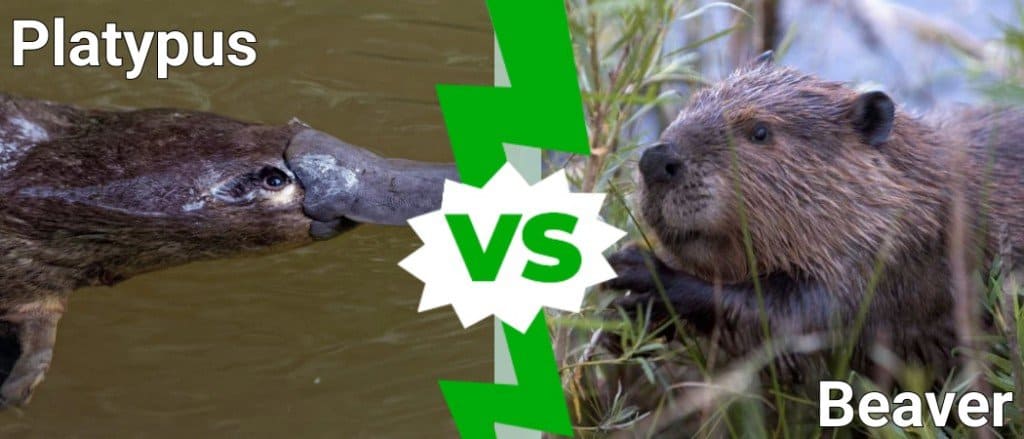
| Platypus | Beaver | |
| Size | Weight: 1.5-5.3lbs Length: 17in-20in | Weight: 35lbs-60lbs Length: 31in-43in |
| Location | Australia, especially the eastern coast | North America, Europe, and Eurasia in far-northern sections |
| Morphology | – Unique, flat bill that helps them detect food – Webbed feet – Long, wide, and flat tail | – Long, wide, and flat tail – Webbed feet – Wedge-shaped rodent face with long teeth |
| Reproduction | – Lays eggs, one of a handful of mammal species to do so – Monotreme | – Gives birth to live young |
| Defenses | – Venomous spurs on the inside of their hind feet – Venom will kill small mammals including dogs and cats, but it won’t kill humans. | – Sharp claws – Long, sharp teeth |
| Nesting Habits | – Build a nest of wet vegetation in semi-aquatic areas | – Dam rivers and ponds to generate areas with deep water – Create “lodges” with underwater entrances |
| Diet | – Carnivorous – Grinding ridges in their mouths to help them break down food | – Herbivorous – Possess true teeth |
The Key Differences Between Platypus vs Beaver
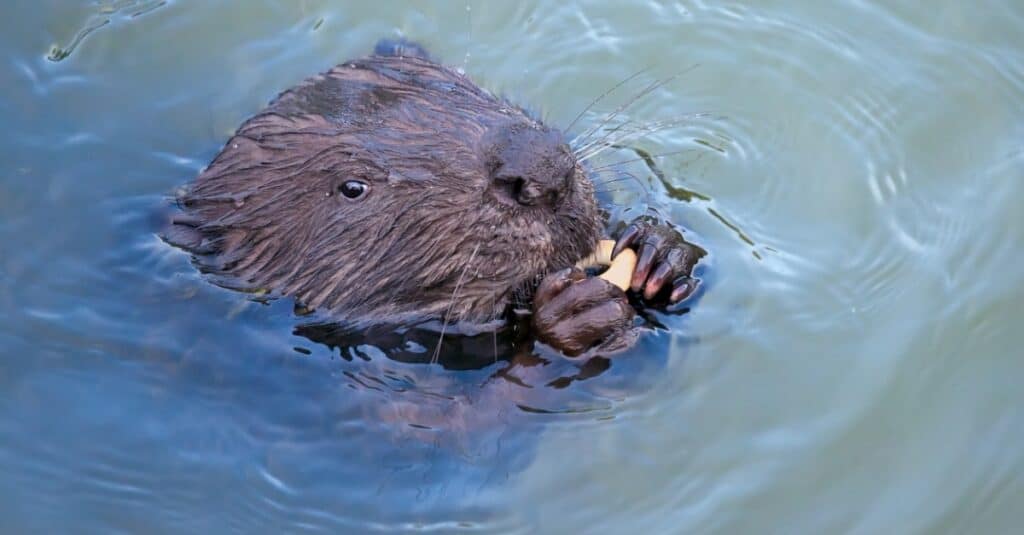
Beavers have unique morphology compared to platypuses.
©iStock.com/TatianaMironenko
The greatest differences between a platypus and beaver lie in their size, morphology, and reproduction. Beavers are far larger than platypuses, weighing over 10 times as much and doubling their overall length.
The morphology of a beaver is such that they have a rodent-like face and a large, flat, and wide tail. However, the platypus also has a very similar tail, but its face ends in a keratinous bill that is somewhat similar to those seen on waterfowl like ducks.
Although platypuses are mammals, they do not give birth to live young— platypuses lay eggs! Beavers are more typical mammals that give birth to live young after a gestation period.
Identifying beavers and platypuses is simple when we consider all the ways they are unique from each other!
Platypus vs Beaver: Size
Beavers are larger than platypuses on average. The average beaver will weigh between 35lbs and 60lbs, and they will grow about 40 inches long. However, the platypus will only weigh about 5.3lbs at its maximum weight and grow about 20 inches long.
The beaver is massive and heavy compared to the platypus, and that’s a great way to tell these furry animals apart at a glance.
Platypus vs Beaver: Location
Beavers live in the northern parts of the world including North America, Europe, and Eurasia, while platypuses only live in Australia. Specifically, platypuses are common on the east coast of Australia. Location is one of the best ways to tell a beaver from a platypus.
Unless one escapes from the zoo, you’ll never see a platypus outside of Australia and Tasmania, and you certainly won’t see beavers south of the equator.
Platypus vs Beaver: Morphology
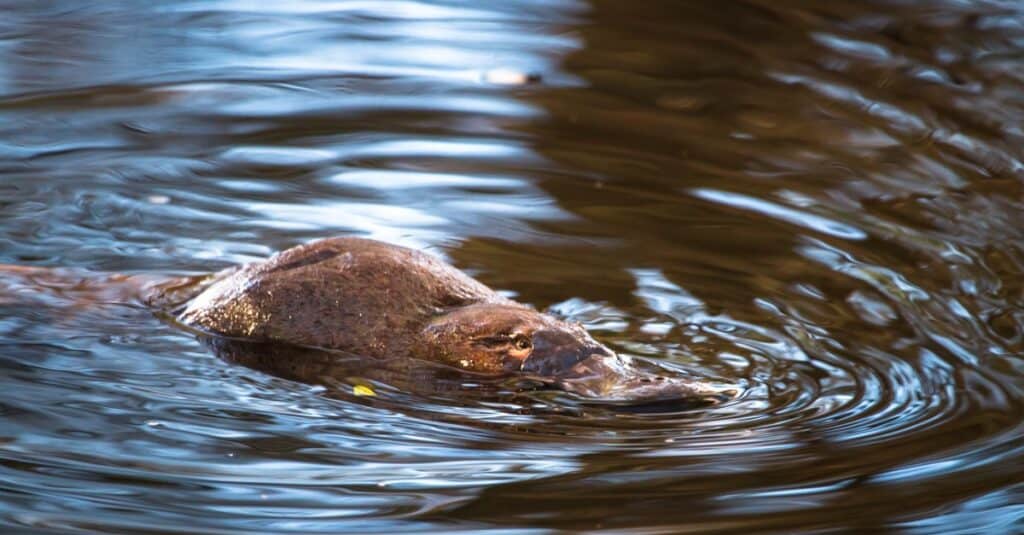
Platypuses are easily distinguished from other creatures by the presence of a bill
©iStock.com/Kevin Wells
Platypuses have a long bill on the front of their head while beavers have wedge-shaped heads like most rodents that end in a nose. As far as bodies go, the presence of the bill on a platypus is the easiest way to tell these animals apart.
Both creatures have fur, webbed feet, and long, wide, flat tails that aid with their swimming. Although their bodies are alike, looking at their sizes and heads is very helpful in distinguishing them.
Platypus vs Beaver: Reproduction
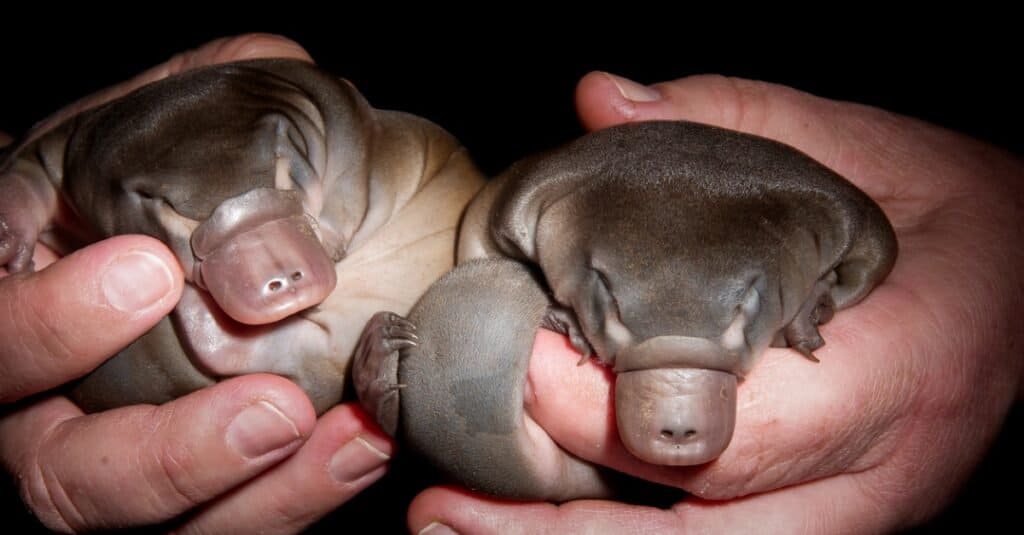
Baby platypuses are hatched from eggs
©iStock.com/IainStych
The platypus is a monotreme, one of a few mammals that lay eggs instead of giving birth to live young. Beavers give birth to live young after a gestation period.
Still, both animals are relatively helpless when they are born, but even a male baby platypus can be dangerous.
Platypus vs Beaver: Defenses
Beavers use their teeth and claws for defense, but male platypuses will use venomous spurs on their hind legs to paralyze and kill predators. The platypus is one of only a few mammals that produce venom.
The platypus is very dangerous to small mammals and they’re capable of killing dogs. Although they can envenomate human beings, platypus venom is not fatal to humans in most cases. Instead, it’s very painful and can lead to lasting side effects such as pain and muscle weakness.
Beavers will claw enemies, but they will only bite if they feel their lives are in danger. However, it’s best not to handle a beaver to avoid such an outcome.
Platypus vs Beaver: Nesting Habits
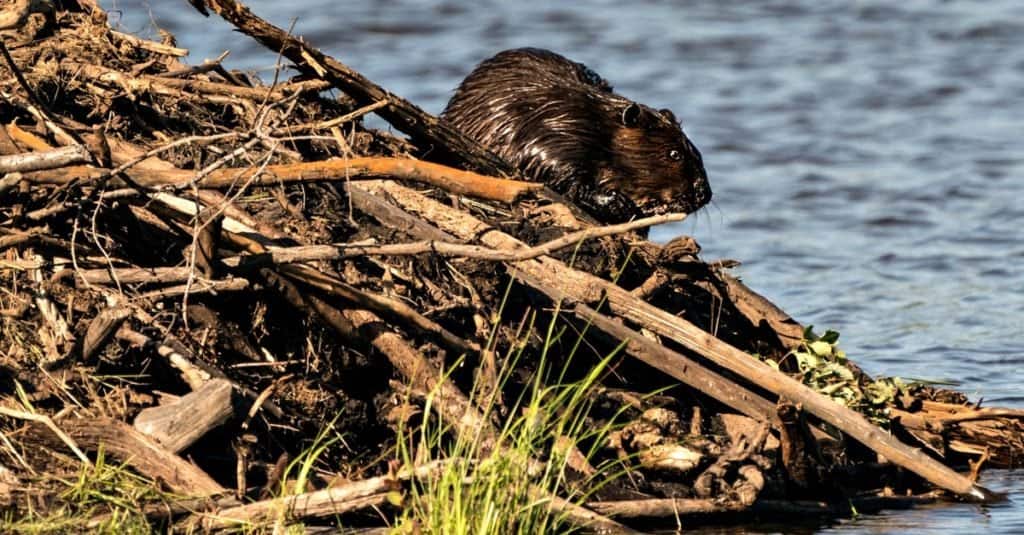
Beavers dam water and then build lodges in the deeper waters
©Rejean Bedard/Shutterstock.com
Platypuses build an open nest in which to lay their eggs, but beavers build very complex lodges that help them deter predators and keep them safe. A platypus will gather wet vegetation and build its nest close to water.
Beavers will dam rivers, streams, and ponds, but they will not live in the dam. Instead, they create a deep area of water with their dams, and they build a lodge within it. The lodge will have a dry area of dirt inside, but the only way in will be from below the waterline. Thus, many predators won’t have the ability to reach these animals.
Platypus vs Beaver: Diet

The platypus is a carnivorous creature that uses its bill’s senses to find prey
©John Carnemolla/Shutterstock.com
Beavers are herbivorous creatures and platypuses are carnivorous creatures. A beaver will most likely eat aquatic plants, tree bark, leaves, twigs, and other plant matter. They use their large, powerful teeth to make a quick meal out of many different plants.
Platypuses are known for eating shrimp, worms, insects, and crayfish. The platypus does not have any teeth, though. They have grinding ridges in their mouths that help them process food and pass it into their gullets. Thus, a beaver’s diet is far different from that of a platypus.
Platypuses and beavers share some similar qualities, but their differences are simply vast. Everything from their size and area of origin to morphology and diet is wildly dissimilar. Thus, if you ever encounter one of these animals or the other, you’ll have no difficulty distinguishing them!
The photo featured at the top of this post is © Martin Pelanek/Shutterstock.com
Thank you for reading! Have some feedback for us? Contact the AZ Animals editorial team.




